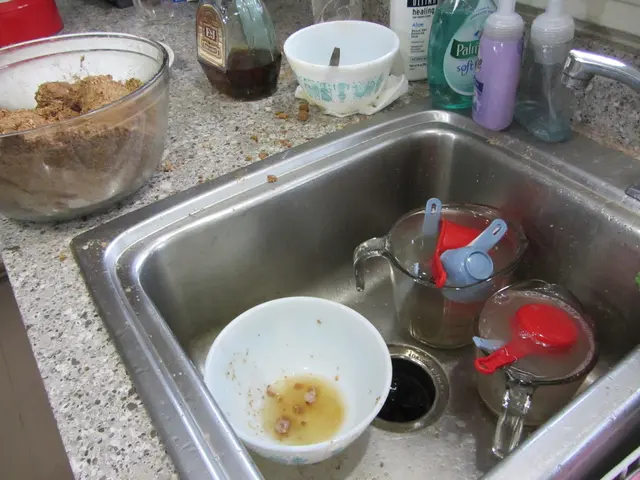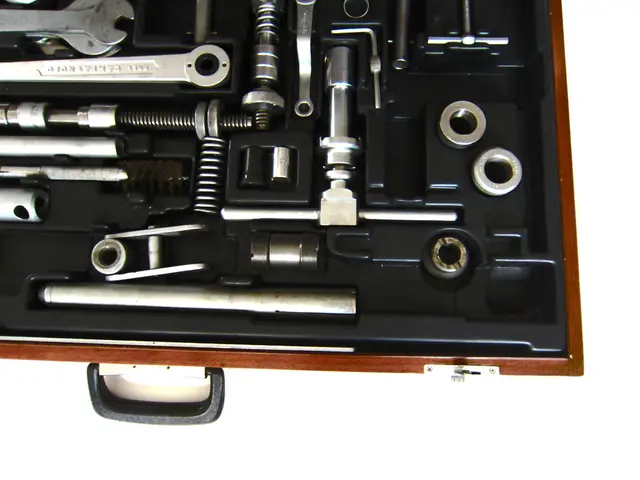Testosterone: Its Role, Deficits, and Supplement Options
In the realm of men's health, a significant issue that arises with age is low testosterone levels. Known as hypogonadism, this condition can lead to a variety of physical and mental health issues. This article aims to provide an informative overview of testosterone replacement therapy (TRT), its benefits, potential risks, and alternative treatments.
Testosterone, the primary male sex hormone, is produced mainly in the testicles by cells called Leydig cells. As men age, testosterone levels naturally decrease, and by the age of 45, about 4 in 10 men have hypogonadism [1]. Symptoms of low testosterone can include reduced sex drive, erectile dysfunction, low sperm count, enlarged or swollen breast tissue, loss of body hair, loss of muscle bulk, loss of strength, increased body fat, and osteoporosis [2].
The recommended treatment for low testosterone levels in older adults is primarily Testosterone Replacement Therapy (TRT). TRT aims to restore testosterone to normal levels and alleviate symptoms related to testosterone deficiency. It can be administered in various forms tailored to patient preference and medical advice, including weekly or bi-weekly injections, topical gels or creams, skin patches, and implantable pellets placed under the skin [3].
TRT offers several potential benefits such as improved libido and sexual function, increased energy and motivation, enhanced muscle strength and body composition, better mood, and improved mental focus [1][2][3]. However, there are potential side effects and risks associated with TRT, which warrant close medical supervision and regular monitoring. These side effects may include acne and oily skin, worsening of sleep apnea, increased red blood cell count, suppression of fertility due to reduced sperm production, potential cardiovascular risks, and decreased "good" cholesterol [1][4].
In cases where fertility preservation is important, alternatives such as clomiphene citrate (Clomid) may be prescribed, which can stimulate the body’s own testosterone production without lowering sperm count [1][4]. Because testosterone therapy affects hormone levels, ongoing lab tests and medical check-ins are essential to ensure safety and efficacy, adjusting treatment as needed based on age, health status, and treatment goals [1][4].
It is important to note that prohormone supplements, such as dehydroepiandrosterone (DHEA) and Tribulus terrestris, are marketed for low testosterone levels, but there is little research to indicate that they affect testosterone levels and they can increase estrogen and decrease "good" cholesterol [5].
TRT can help restore some affected functions of low testosterone, particularly impacting bone strength and hemoglobin levels, but not mental sharpness [6]. However, it is crucial to remember that the number of cases in which older men have been diagnosed as having low testosterone has increased 170 percent since 2012 [7]. This increase raises questions about whether every case requires treatment, and careful consideration should be given to the benefits and risks of treatment.
In summary, TRT is the mainstay treatment for low testosterone in older men, offering substantial symptom relief but requiring careful management to mitigate side effects and monitor health outcomes. It is essential for men to maintain their testosterone levels, but natural decline over time may not require treatment. Consult a medical professional to confirm if treatment is required.
References: [1] Mayo Clinic. (2021). Testosterone replacement therapy (TRT). Retrieved from https://www.mayoclinic.org/tests-procedures/testosterone-replacement-therapy/about/pac-20394887 [2] National Institute on Aging. (2021). Low testosterone (Low T). Retrieved from https://www.nia.nih.gov/health/low-testosterone-low-t [3] American Urological Association. (2021). Testosterone therapy for hypogonadism in men: AUA guideline. Retrieved from https://www.auanet.org/guidelines/male-health/testosterone-therapy-for-hypogonadism-in-men [4] National Library of Medicine. (2021). Clomiphene citrate. Retrieved from https://medlineplus.gov/druginfo/meds/a682161.html [5] National Library of Medicine. (2021). Dehydroepiandrosterone. Retrieved from https://medlineplus.gov/druginfo/natural/986.html [6] National Institute on Aging. (2021). What does testosterone do in the body? Retrieved from https://www.nia.nih.gov/health/what-does-testosterone-do-body [7] National Institutes of Health. (2021). Testosterone therapy use among older men: A systematic review and meta-analysis. Retrieved from https://www.ncbi.nlm.nih.gov/pmc/articles/PMC7032867/
- In women's health, menopause, a natural phase of life, is a significant event that often leads to hormonal imbalances.
- Menopause can bring about numerous physical and mental changes, such as hot flashes, mood swings, sleep disturbances, and vulnerability to chronic diseases like type-2 diabetes and osteoporosis.
- For women dealing with menopause symptoms, hormone replacement therapies (HRT) might be recommended by medical professionals to alleviate symptoms and reduce the risk of chronic diseases.
- HRT can come in various forms, including oral medications, topical creams, skin patches, and implantable pellets.
- HRT is known to help improve symptoms associated with menopause, like hot flashes, night sweats, and vaginal dryness. However, there can be potential side effects like increased risk of blood clots, breast cancer, and stroke.
- Alongside HRT, medications like antidepressants, antihypertensives, and birth control pills may be prescribed to manage other symptoms and conditions linked to menopause.
- An important element of women's health and wellness is maintaining skin care and preventing age-related skin issues, such as wrinkles, fine lines, and hyperpigmentation.
- Fitness and exercise are also essential components of women's health, as they help maintain a healthy weight, boost mood, and reduce the risk of chronic diseases like diabetes and cardiovascular conditions.
- Another crucial aspect of women's health is addressing sexual health concerns, which can include issues like low libido, painful intercourse, and vaginal infections.
- Medical conditions such as asthma, multiple sclerosis (MS), bipolar disorder, and chronic diseases like obesity and sleep apnea can also impact women's health requires careful monitoring and management.
- For women enrolled in Medicare, they can access various resources to learn about and manage their medical conditions, including education on menopause, HRT, and women's health in general.






